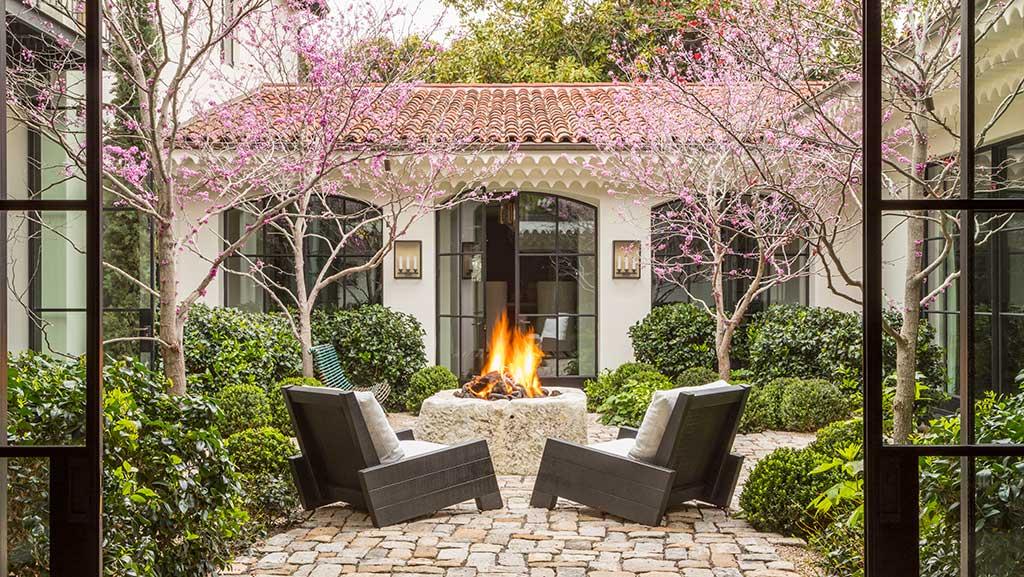Follow us if you’re wondering how to create a calm and inviting space with a part shade foundation garden. Very nice tips are waiting for you.
Creating a garden partition is an effective way to divide up spaces in your garden and add visual interest. First, decide on the materials you want to use, such as bamboo, wooden panels or trellises.
Next, mark out the area for your partition and install the support posts. Then, attach the chosen materials to the posts to create your partition.
Remember to take care of any plants that may be affected during the installation process. With some creativity and a little effort, you can create a beautiful and functional garden partition to enhance your outdoor space.
Create a beautiful and functional garden partition with these simple steps.
Materials needed:
Bamboo, wooden panels, or trellises
Support posts
Tools (drill, screws, saw)
| Highlights | Description |
| Part Shade | Best for areas with less sunlight |
| Foundation Garden Plan | Designed specifically for foundation gardens |
| Template | Easy to follow layout for ease of use |
| Low Maintenance | Minimal upkeep required for long term beauty |
| Customizable | Can be personalized to suit your preferences |
There are eight ways to divide your garden using borders, edible plants, and clever planting: MAKE A DIVISION; USE CLIMBERS; CHOOSE SOME RUSTIC FENCING; USE HEDGES ON STILTS; ADD WEAVING INTEREST; TRAVEL UP THE WALL; USE GREEN BORDERS.
Related Article: Peace Garden Ideas to Bring Serenity Home
How Do You Use Shady Part Of A Garden?
A stumpery is the ideal place to add some garden sculpture. Hardwoods such as oak or beech are frequently recommended for stumps, but conifers will be fine as well. Mix up your deciduous and evergreen plants for an ever-changing palette of color.
Utilizing the shady part of a garden can transform a dull space into a lush sanctuary.
Shady areas in the garden are usually overlooked, but they can be transformed into an enchanting retreat with a little creative thinking. One option is to plant shade-loving plants such as hostas, ferns, and astilbes.
Another is to create a seating area with weather-resistant furniture where you can relax and enjoy the coolness. You can also hang hammocks or string lights for a cosy ambiance. With these tips, you can turn the shady part of your garden into an oasis of calm and beauty.
How Do You Plan A Shade Garden?
Planning a shade garden requires a bit of creativity and strategic planning. First, determine the amount of shade your garden receives each day. Consider the type of plants that thrive in your particular shade conditions.
Next, decide on a color scheme, and select plants that will complement each other. Important factors to keep in mind include soil type, drainage, and watering needs.
Planning a shade garden requires strategic planning and consideration of important factors such as soil type, drainage, and watering needs.
Important items to consider:
– Amount of shade
– Plant compatibility
– Color scheme
– Soil type
– Drainage
– Watering needs
– Plant variety
Not:In addition to the information we have provided in our article on
part shade foundation garden plan template, you can access the wikipedia link here, which is another important source on the subject.
What Plans Do Well In Shade?
Rhododendron, hydrangea, viburnum, dogwood, and daphne all tolerate some shade, and azaleas are well-known shade plants with colors of orange, pink, purple, yellow, red, and white.
Wondering what plants grow well in the shade? Let’s explore!
Shade can be a challenge for gardening enthusiasts, but there are still plenty of options available. Some plants thrive in low-light conditions, offering beauty and color without the sun. Here are a few to consider:
– Hostas come in a wide variety of sizes, shapes, and colors, making them a versatile choice for any shade garden.
– Impatiens are an annual plant that produces masses of colorful flowers and prefers the cool, damp conditions of the shade.
– Ferns have a delicate, lacy texture and come in a range of sizes and varieties, from tiny groundcovers to towering specimens.
Don’t let shady areas hold you back from creating the garden of your dreams. With a little research and planning, you can find the perfect plants to thrive in low-light conditions.
Related Article: Garden Folly Ideas
